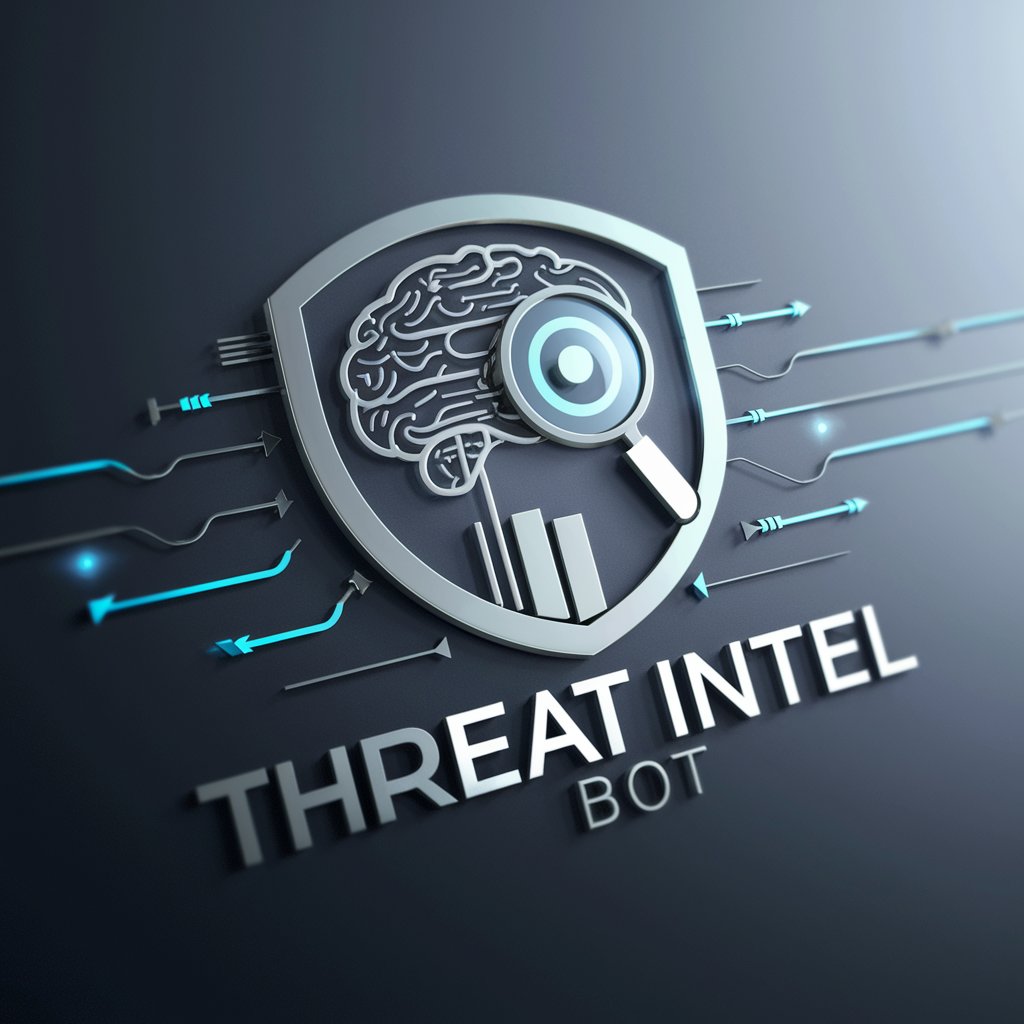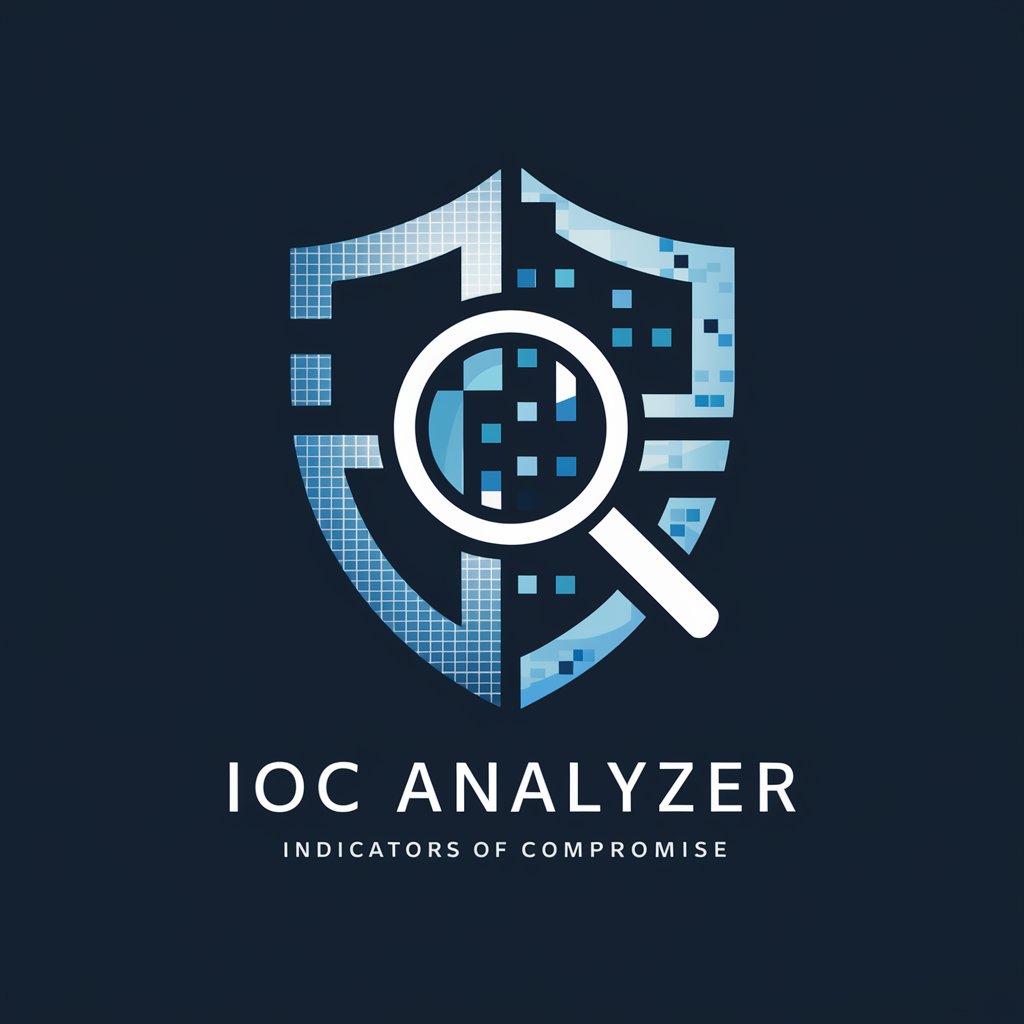6 GPTs for Threat Research Powered by AI for Free of 2026
AI GPTs for Threat Research are advanced artificial intelligence tools developed to address the complexities of cybersecurity threat detection, analysis, and mitigation. Leveraging the power of Generative Pre-trained Transformers, these tools are engineered to sift through vast datasets, identifying potential security threats and vulnerabilities. Their relevance lies in their ability to offer tailored solutions for real-time threat intelligence, analysis, and predictive modeling, significantly enhancing the efficiency and effectiveness of cybersecurity operations.
Top 6 GPTs for Threat Research are: Threat Intel Bot,CVE Explorer,IoC Analyzer,CVE Detailer,Vulnerability Insights,Security Now! (2020-2024) Show Analyzer
Threat Intel Bot
AI-Driven Cyber Threat Intelligence

CVE Explorer
Your AI-Powered CVE Guide

IoC Analyzer
Unveiling Cyber Threats with AI Precision

CVE Detailer
AI-driven insights into cybersecurity vulnerabilities.

Vulnerability Insights
AI-Powered Security Insight at Your Fingertips

Security Now! (2020-2024) Show Analyzer
Unleashing AI for Cybersecurity Intelligence

Essential Attributes of AI GPTs in Threat Research
AI GPTs for Threat Research exhibit unique capabilities such as natural language processing to interpret and generate human-like text, making them invaluable for analyzing unstructured data common in threat intelligence. They support deep learning to adapt and improve threat detection over time. Special features include the ability to perform complex data analysis, recognize patterns indicative of cyber threats, offer predictive insights, and automate responses to security incidents. Their adaptability ranges from supporting novice users through user-friendly interfaces to offering extensive customization options for developers and cybersecurity professionals.
Who Benefits from AI GPTs in Threat Research?
AI GPTs for Threat Research cater to a broad audience, including cybersecurity novices, developers, and seasoned professionals. They are particularly beneficial for individuals and organizations seeking to enhance their threat detection and analysis capabilities without extensive coding knowledge. Additionally, these tools offer advanced customization and integration options, appealing to developers and cybersecurity experts looking to tailor solutions to specific threat landscapes or integrate them into existing security frameworks.
Try Our other AI GPTs tools for Free
Cosmic Horror
Explore AI GPTs tailored for Cosmic Horror, your gateway to generating, analyzing, and diving deep into the genre's unique narratives and themes. Ideal for creators, researchers, and enthusiasts.
Mythos Exploration
Explore the realms of mythology with AI GPTs for Mythos Exploration, your gateway to understanding and interacting with ancient narratives through advanced technology.
Behavioral Strategy
Explore how AI GPTs for Behavioral Strategy revolutionize decision-making with tailored insights into human behavior, enhancing strategic initiatives across industries.
Data Simulation
Discover AI GPTs for Data Simulation: cutting-edge tools designed to generate realistic, simulated data for diverse applications, enhancing development, testing, and research.
Scenario Testing
Discover how AI GPTs for Scenario Testing can revolutionize decision-making with advanced simulations and predictions. Tailored for diverse users, these tools offer strategic insights for informed planning.
Lifestyle Evaluation
Discover how AI GPTs for Lifestyle Evaluation can transform your daily routines with personalized insights into health, wellness, and lifestyle optimization.
Expanding Horizons with AI GPTs in Threat Research
AI GPTs for Threat Research not only streamline threat detection and analysis but also open new avenues for predictive threat modeling and automated incident response. Their integration into cybersecurity operations offers a proactive approach to threat management, enhancing the resilience of digital infrastructures against emerging cyber threats. These tools embody the fusion of AI with cybersecurity, promising a future where cyber defenses are as dynamic and intelligent as the threats they combat.
Frequently Asked Questions
What exactly are AI GPTs for Threat Research?
AI GPTs for Threat Research are specialized AI tools designed to enhance cybersecurity through advanced threat detection, analysis, and predictive modeling, using the capabilities of Generative Pre-trained Transformers.
How do AI GPTs improve threat detection?
They utilize natural language processing and deep learning to analyze vast amounts of data, identify patterns, and predict potential threats, thus improving the speed and accuracy of threat detection.
Can non-technical users leverage AI GPTs for Threat Research?
Yes, these tools are designed with user-friendly interfaces that allow non-technical users to effectively utilize them for threat research without needing extensive programming knowledge.
Are there customization options available for professionals?
Absolutely. AI GPTs offer extensive customization and programming interfaces, enabling professionals to tailor the tools to specific needs or integrate them into existing cybersecurity frameworks.
What sets AI GPTs apart in the cybersecurity field?
Their ability to process and generate human-like text, combined with deep learning, allows for unparalleled analysis of unstructured data, pattern recognition, and predictive threat intelligence.
How can organizations integrate AI GPTs into their existing systems?
AI GPTs for Threat Research are designed for easy integration into existing security systems and workflows, offering APIs and customizable modules to enhance cybersecurity operations.
Is real-time threat analysis possible with AI GPTs?
Yes, these tools are capable of conducting real-time threat analysis, offering immediate insights and predictive intelligence to preemptively address potential security vulnerabilities.
How do AI GPTs adapt to new and evolving threats?
Through continuous learning and data analysis, AI GPTs can adapt to new threats, updating their models and algorithms to recognize and respond to the latest cybersecurity challenges.